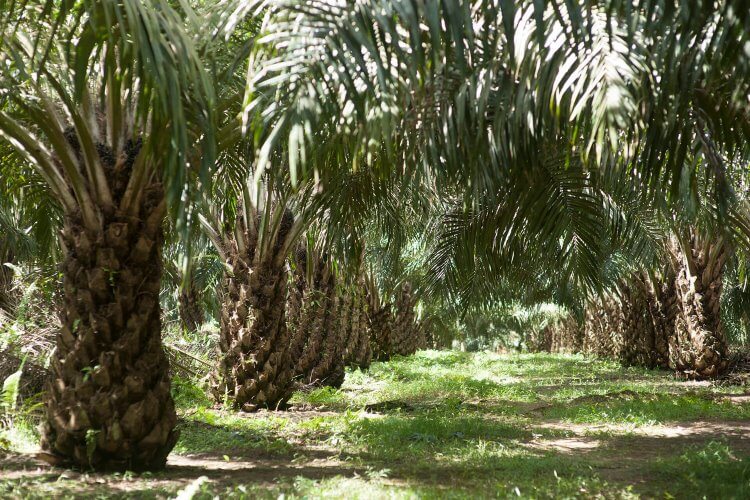Indonesia Faces Rp 47 Trillion Challenge to Implement B40 Biodiesel by 2025
JAKARTA, RAKYAT NEWS – Indonesia is on track to implement B40, a biodiesel fuel mix of 40% palm oil and 60% diesel, by 2025, but achieving this ambitious target requires a substantial financial investment.
The Palm Oil Plantation Fund Management Agency (BPDPKS) has projected that the initiative will need around Rp 47 trillion to cover the costs of producing the necessary biodiesel. This funding requirement stems from the higher cost of Fatty Acid Methyl Ester (FAME), or biodiesel, compared to regular diesel.
According to BPDPKS CEO Eddy Abdurrachman, the B40 program will require approximately 16 million kiloliters of biodiesel, up from the 13.4 million kiloliters needed for the B35 program, which is currently in effect.
As the demand for biodiesel increases, the costs of production are expected to rise as well, particularly if biodiesel prices remain above those of diesel. Eddy pointed out that the geopolitical situation could potentially alter diesel prices, as seen in 2023 when diesel was more expensive than biodiesel.
As of the end of 2024, BPDPKS expects to have a balance of Rp 32 trillion in its fund, with revenues from the palm oil export levy projected to reach Rp 21.5 trillion in 2025. This would bring the total available funds to Rp 53.5 trillion, helping to bridge the gap for the B40 program.
The Indonesian government remains optimistic about achieving this target, with Coordinating Minister for Economic Affairs Airlangga Hartarto reaffirming that the country is ready for B40 implementation by 2025.
The B40 initiative is part of Indonesia’s broader strategy to reduce reliance on fossil fuels and transition to renewable energy sources. The next step in this transition is the B50 biodiesel program, which is scheduled to launch in 2028.
The palm oil industry, key to the success of this plan, has expressed its full support for the government’s biodiesel policy, focusing on increasing the production of crude palm oil (CPO) through improved plantation productivity.
Indonesia’s palm oil sector faces a challenge, however, as it struggles with stagnating CPO production. Data from the Indonesian Palm Oil Research Institute (RPN) shows that of the 6.94 million hectares of oil palm owned by farmers, 1.36 million hectares are over 25 years old, while 1.64 million hectares are planted with young palms under 3 years old.
The remaining 3.94 million hectares are mature plants. This age distribution is contributing to slower growth in CPO production, and the industry is under pressure to rejuvenate plantations.
Eddy Martono, Chairman of the Indonesian Palm Oil Entrepreneurs Association (GAPKI), emphasized that increasing productivity is key to addressing this stagnation. The industry is now focused on promoting sustainable agricultural practices and replanting older palm trees to improve yields. He stressed that enhanced productivity will be critical to meeting the government’s biodiesel goals, especially as the target for B50 looms in 2026.
Edy Suprianto, Chairman of the Indonesian Palm Oil Seed and Breeding Association, noted that replanting is one of the most effective ways to boost productivity. However, it takes time to see the benefits of such programs, with replanting requiring at least five years before substantial yield increases are realized. In the meantime, other measures, such as improved agronomy practices, including better water management, fertilization, and pest control, are also necessary.
Demand for CPO is expected to keep rising through 2030, driven by the expansion of the biodiesel sector and the increasing consumption of palm oil in the food and oleochemical industries. As a result, the palm oil sector is investing in precision agriculture, including the use of drones, soil sensors, and disease-resistant varieties to keep pace with growing demand. Supporting smallholder farmers, who account for 40% of CPO production, is also seen as crucial to achieving long-term sustainability.
Professor Patricio Grassini of the University of Nebraska-Lincoln highlighted Indonesia’s potential to increase palm oil yields, similar to improvements made in other crops like rice and corn. He suggested that with more intensive productivity strategies, CPO yields could increase from 3.4 tons per hectare to 8 tons per hectare. Such improvements could elevate national CPO production to 108 million tons annually, potentially generating up to USD 97 billion in revenue.
As Indonesia strives to meet its B40 and B50 targets, the palm oil sector faces a combination of challenges and opportunities. Achieving higher yields through replanting and better agricultural practices will be essential for both meeting domestic biodiesel demands and maintaining the country’s competitiveness in the global market. With sustained investment in research, innovation, and farmer support, Indonesia’s palm oil industry could become a major player in the global energy transition. (Uki Ruknuddin)


Tinggalkan Balasan Batalkan balasan